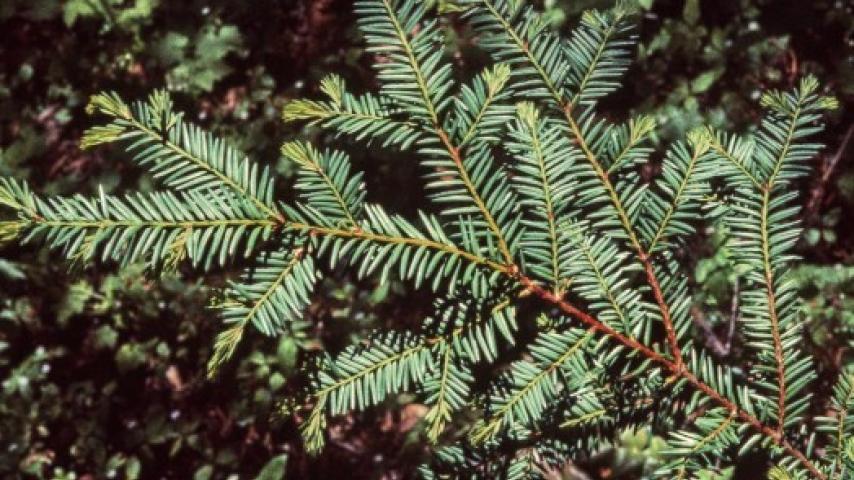Pacific Yew (Taxus brevifolia)
Yews are well known in history for the use of their wood in making longbows all around the world, and this species was not only prized by Northwest native people but is still used for that purpose by present-day archers. The supple heartwood can be compressed and return back to its original shape, and the strong sapwood protects the heartwood from breaking.

KINGDOM Plantae - PHYLUM Coniferophyta - CLASS Pinopsida - ORDER Pinales - FAMILY Taxaceae
Although conifers, yews have deviated dramatically from others of their group and present their seeds to the world within a red berry-like coating. This is attractive to birds, which eat the fruit and disperse the seeds that have passed through their gut. The seeds are poisonous to mammals, presumably an adaptation that favors bird dispersal, which is usually to greater distances.
Yews are shrubs or small trees (to 15 m in height) of the forest understory, growing well in dense shade. The bark is papery and reddish, the trunk and branches often twisted. The flat and sharply pointed needles of yews are arranged in rows along the stems, taxus meaning ‘to arrange’ in Latin; taxonomy means ‘to arrange names.’
An extract from the bark called taxol is used as an anti-cancer drug, and the bark has been extensively harvested for that purpose. The impact of bark collection led to Pacific yew, a slow-growing plant, becoming rarer in western forests. Taxol is now harvested largely from cultivated yew, a practice that has allowed Pacific Yew to slowly recover.